One of the great benefits of working with UF/IFAS Extension is that local experts are working in every county in Florida using science to solve problems, especially those related to lawns and landscapes! These experts are known as “Extension Agents,” which is a term that aligns with the investigative nature of the job. This is an important role because how we manage our green spaces not only matters aesthetically, but is also significantly important to the environment, the people who live in the communities, and the money spent to manage the places.
If you do notice that something a little off in the landscape, we can help! But we are only as good as the samples and information provided. A picture of the landscape as a whole can help the Agent get an idea of the environmental conditions and surroundings, and images that get up close allows for inspection of the nooks and crannies of an ailing plant.
UF/IFAS does offer a variety of levels of diagnostic services including soil pH and nutrition, water tests, tissues tests, plant, fungi, or insect identification, nematode assays and disease diagnostics. Some of the services offered are quite technical and will have fees for use. Start by inspecting samples with your County Extension Agent!
How to take a sample
Various types of plant samples will be discussed including photos, plant pieces, and whole plant samples. A brief overview of the next level of diagnostic services available through UF/IFAS and private laboratories will then be presented.
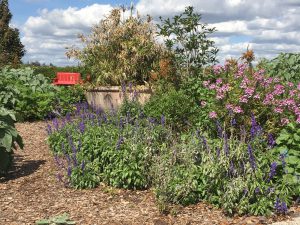
Photos
Photos can be very useful and convenient for plant samples in a pinch. Photos are an excellent tool to begin the landscape investigation. Take a set of photos that includes a bigger picture of the landscape and get photos of the issue up close.
Landscape – Take a photo that captures the landscape, including the problematic area.
Plant – Take a photo of the entire problematic plant.
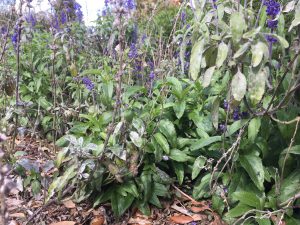
Close Up – Take a photo of the issue up close. Photograph the section of leaves (top and bottom) or patch of turf in decline.
Flowers and fruits* – Photos of reproductive organs are typically required for plant identification.*
Sometimes a great set of photos can tell a lot, but it is typical that more information may be requested such as actual plant samples, soil samples, or even specific samples for disease diagnostics.
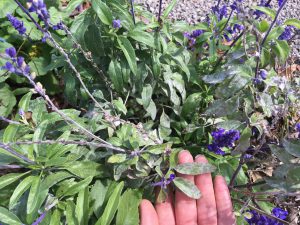
Sometimes a couple of angles can provide the most complete image of the surroundings. Agents look for noticeable patterns and observe the environment as a whole while also scouting the plants up close looking for certain clues associated with plant decline.
Plant Samples
Plant samples can be good for in person, up close, inspection by your Extension Agent, and are required for disease diagnostics in a laboratory.
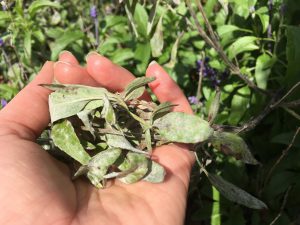
The disease diagnostic laboratories are located at research centers throughout Florida, and your County Extension Agent can assist in laboratory selection.
Plant samples are best when still alive and showing symptoms of decline. Please accompany plant samples with photographs and information.
Entire plant, in person inspection – Bring plant in original container or dig root ball and transport in a bag or container. Good for root inspection and to observe planting depth. Further diagnostics requires lab analysis.
Plant pieces, in person – If not reasonable to bring entire plant, prune out pieces that show issue including healthy living tissue and declining tissue. Further diagnostics requires lab analysis.
Plant pieces, shipped to laboratory – See the Specific Collection and Submission Guidelines for certain types of plant issues to be sent to the laboratory. Best to collect and ship early in week. Ensure that packaging involves separating roots and soil from the rest of the plant before the plant is carefully wrapped and boxed for shipping.
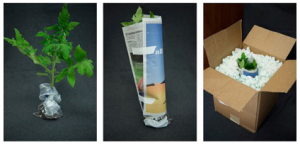
There are some limitations to determining a landscape issue with plant samples alone, without photos and supplemental information. A plant sample alone may help to identify what an issue is, but not why the issue is occurring in the first place.
Options for submitting samples
You have a few options for sample submission. You can use the traditional method of phone call, email, or office consultation with your local Extension Agent to determine how to address the landscape issue at hand. Commercial landscaping operations should get to know their County Agent. Residential landscape questions can be addressed by the trained UF/IFAS Master Gardener Volunteers.
There is also a new method of sample submission for those of you who prefer the convenience of modern technology. The online tool offered through UF/IFAS Extension is called the Distance Diagnostic Information Service, aka DDIS. Whether you use the traditional method or the online tool, the sample will first be observed by your local Extension Agent. The Agent may request further diagnostics, and if the issue cannot be addressed in the local office, then feedback from UF/IFAS State Specialists may be in order. No matter how you prefer to communicate, it all comes down to providing excellent samples and information about the issue.
Other diagnostic tools
Photographs and plant samples can tell a lot about a landscape, but sometimes more diagnostic tools and information are necessary to determine what is contributing to the problem. If you and your local Extension Agent cannot figure out what is going on in the landscape, UF/IFAS has diagnostic laboratories and scientists across the state that can offer a more specific, in-depth analysis. Due to the specialized equipment and personnel, these next level services are typically fee based.
Soil Sampling for pH: Contact your UF/IFAS County Extension Office.
UF/IFAS Diagnostic Services: See overview of diagnostic services offered.
Rapid Turfgrass Diagnostic Service: Quick turnaround time for turfgrass managers.
Plant Disease: See Specific Collection and Submission Guidelines. Contact your County Extension Agent or the Plant Diagnostic Clinic with specific questions. In general, plant tissues that are still alive and showing symptoms and progression of disease are best.
Insect ID: In general, insect samples must be dead (frozen or preserved in 70% alcohol), in the adult form, and the more samples the better. See more information about the UF/IFAS Insect Identification Service.
Nematodes: See recommendations for collection of nematode samples at specific sites.
Soil, Water & Tissue: Take multiple random soil samples from the site that are 4 to 6 inches deep and mix in a bucket. Remove debris. Mix soil and pull a composite of 1- 2 cups of soil from the mixture to ship to the lab. Label the bag with the site. See more information about UF/IFAS Extension Soil Testing Lab.
Plant, Weed & Fungi ID: Identification typically needs samples with reproductive organs present, such as flowers or fruits. Learn more about working with the the Florida Herbarium here.
Palm Phytoplasma: Contact your local Extension Agent to discuss palm issues and assess the need for diagnostics. See UF/IFAS Palm Information here.
Livestock: Contact your livestock Extension Agents for information specific to livestock services.
 0
0
